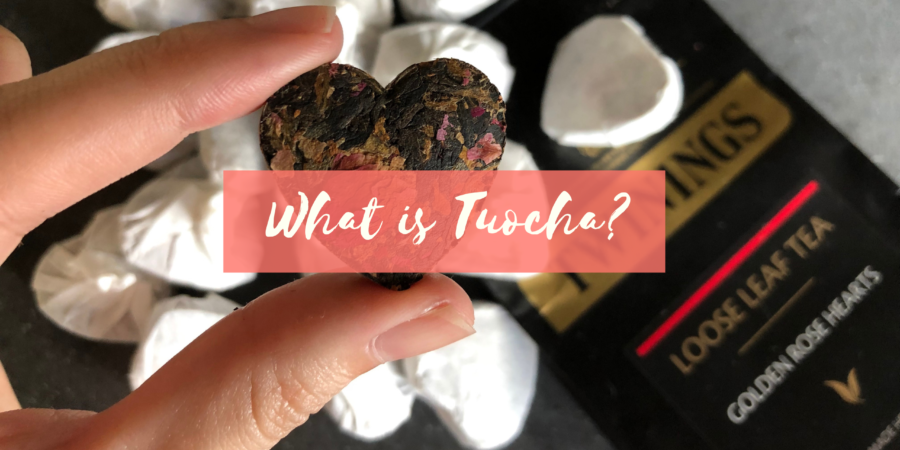The back of Twinings’ Golden Rose Hearts has the following description to describe the tea:
“Handmade using a traditional Chinese technique known as ‘Tuocha’, a single rosebud is placed into black tea leaves and compressed into a heart shape. When infused in hot water, the rosebud delicately scents the strong, brisk black tea.”
I was pretty intrigued by the description because from my extremely limited knowledge, tuocha (沱茶) is a form of puer. So I decided to look into it.
From what I understand on Baidu [1], tuocha is a subset of a type of tea called Jin Ya Cha (紧压茶) or pressed tea. Also known as 谷茶 (Gucha), tuocha is made primarily in Yunnan and can be further subdivided into two types:
- Yunnan Tuocha (云南沱茶), which is made of green maocha
- Yunnan Puer Tuocha (云南普洱沱茶) or Puer Tuocha (普洱沱茶), which is made by compressing loose puer leaves.
In all the Chinese pages I could find, tuocha is described as being shaped like a nest – basically, a hollowed-out half sphere. I even looked through Taobao [2] and the tea was pretty uniform. The only non-nest shaped teas I saw were the Golden Rose Hearts and this flower-shaped tea [3] from a tea shop in Japan [4].
History-wise, tuocha is thought to have derived its name from the Tuojiang (沱江 – Tuo River) in Sichuan. But to get to that point, we have to start in 1900, with a tea shop by Li Wenxiang from Jinggu who started making moon-shaped teas. These were known as gucha, which you’ll recognise as an alternative name for tuocha. Two years later, merchants copied this tea into a bowl-shaped tea which was shipped around and eventually, the tuojiang tea got its name. This commerce also gave the tea another name – Xufu tea (叙府茶).
One interesting thing I realised is that when searching in Chinese, the sources are pretty clear that tuocha is made either with maocha or loose puer. And even though maocha is technically a green tea, I’d say that it can also be classified as puer – raw puer. So far, I’ve not seen anything that says tuocha can consist of non-puer tea[5].
Looking back at the Golden Rose Hearts description I started this post off with, I think it’s pretty clear that tuocha may not be the best thing to call the tea, given that it’s shaped in a heart rather than a nest. Perhaps Jin Ya Cha would be a better term, since that seems like a slightly broader definition.
Notes
[1] 沱茶 page
[2] Which is surprisingly good for tea if you know how to look
[3] It’s described as a ‘small rose tuocha‘ on its product page – another rose one, but this time for tea.
[4] A Japanese definition for tuocha is also the only other place where I saw shapes like “pumpkin” and “mushroom” mentioned. I’m not sure how this came about, since Chinese sources overwhelmingly show it as a bowl/nest shape – any ideas?
[5] To be fair, my search terms were mainly on the definition of tuocha and its difference from puer but I think that if no one mentions that tuocha doesn’t have to be made from puer in the difference, then it’s probably made mainly using either raw or ripe puer.
